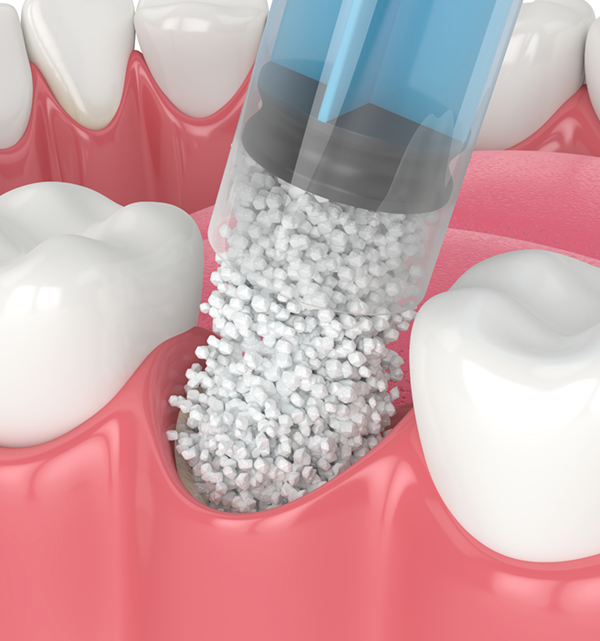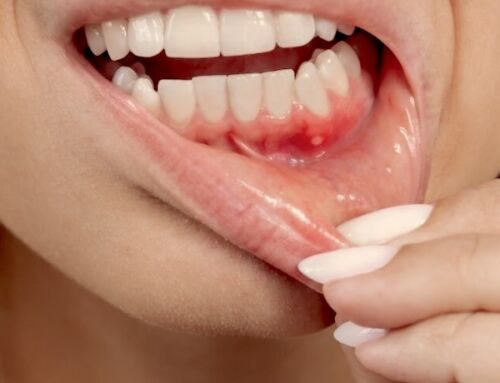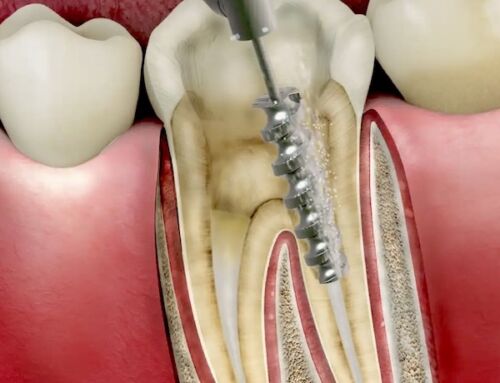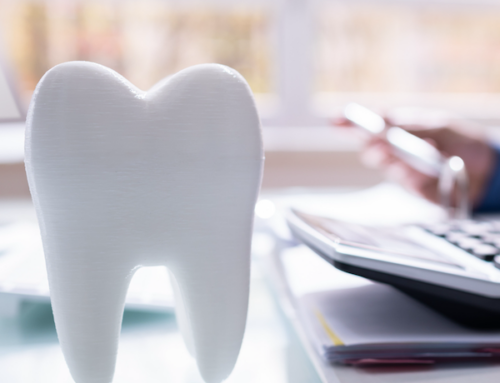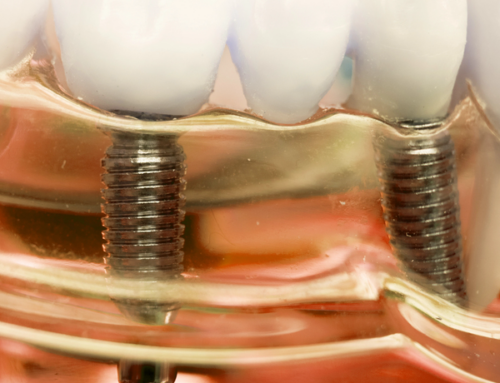If it has been a long time since you had a tooth removed, then it is likely that the bone in that area has decreased in height and width. This is a normal consequence of tooth extraction without corresponding replacement.
Over time, the bone will be significantly compromised so that it can no longer support future tooth replacements such as dentures or dental implants. Your appearance may also be affected due to poorly supported facial muscles.
To solve this, bone augmentation through bone grafting is done. This involves improving the height and width of the bone through natural or artificial bone substitutes. The result is a more reliable foundation for tooth replacement procedures and a more appealing smile and overall look.
What is a dental bone graft?
A dental bone graft adds to the bone density, height, and width using bone substitutes. This is usually done if you have lost one or more adult teeth and the gum and bone have naturally decreased.
Aside from this, a dental bone graft may also be recommended for those with bone or periodontal disease. Generally, patients with bone loss who need improved structural support may undergo bone grafting.
There are several types of dental bone grafts that you and your dentist may opt for:
- Autogenous – taken from your own body, usually from the hip or jaw
- Allograft – taken from a different person/cadaver
- Xenograft – taken from another species, as in a cow or pig
- Alloplast – only artificial/synthetic substitute that uses calcium phosphate materials
As autogenous bone grafts are harvested from the same individual, they offer the highest compatibility and success rate for bone grafts. This makes them the “gold standard” for bone grafts.
What are the benefits of a dental bone graft?
A dental bone graft acts like a scaffold where new bone tissue can grow and regenerate. Because of this feat, grafts can benefit a patient with bone loss in many ways.
Preserves the extraction socket
One of the main consequences of tooth extraction is the decrease of bone. Over time, the bone will “sink” because there is no tooth to support it. To avoid this, your dentist may opt to place a bone graft in the socket immediately after tooth extraction. This will encourage bone formation and hold the bone’s optimal height and shape.
Improves facial appearance
When the bone sinks due to the loss of one or more teeth, the facial muscles will also appear hollow and sunken. This is most evident in the loss of the front teeth where the lips may look “flat”. But with a bone graft in place, support for the facial muscles is restored to improve the appearance of the face.
Reinforces bone for implant treatment
One of the common uses for bone grafts is to prepare the area for dental implants. A dental implant is a type of tooth replacement procedure that involves surgical placement of a titanium screw into the bone. The screw needs a sufficient amount of healthy bone to avoid complications upon placement and use. This is where bone grafts can help.
A bone graft for dental implants can reinforce the density of the bone to make it more suitable to receive implants. Aside from this, a bone graft can also be performed if you need a sinus lift. This is commonly done for upper teeth implants with lowered sinus floor. The graft will provide thicker protection to prevent sinus perforation.
Rebuilds jaw for dentures
Long-term tooth loss may cause flatter or thinner arch support. If this is the case, dentures won’t stay in place because it has no proper and stable foundation. To help with this, a graft may be done to increase the height and widen the bone where the dentures will be placed. This will help with the retention and stability of the denture so you can confidently smile, eat, and speak.
Repairs periodontal disease
Lastly, bone grafts are also very useful for those with bone loss due to periodontal disease. Periodontitis is a serious infection that causes inflammation of the gums and bone. Left untreated, bacteria will continue to eat away the bone until the tooth becomes loose.
To treat this, periodontitis must first be addressed with thorough scaling and root planing. Once healed, your dentist may consider bone grafts to provide support for the existing teeth and reduce their mobility.
What are the results after a dental bone graft?
After a dental bone graft, you should expect some level of swelling and discomfort where the graft was placed. Full recovery and healing can take weeks or months. This usually depends on the size of the graft placed, your post-surgical routine, and your oral and general health.
With good upkeep and periodic visits to your dentist for progress checks, you can expect your bone graft to heal well in preparation for a denture or implant placement.
Some of the postoperative care tips that you should remember after getting a dental bone graft include:
- Take medications as prescribed
- Apply ice packs where painful and inflamed for the first 24 – 48 hours
- Stick to a soft diet for up to a week
- Avoid hot liquids, hard and crunchy foods
- Avoid strenuous activities for a week
- Maintain good oral hygiene
The surgery site may feel uncomfortable, with a dull pain along the area. This should improve within a week as you recover.
Conclusion
Dental bone grafts are one of the solutions that we offer at Chinook Dental Group to make your smile healthier and more beautiful. With this treatment, we optimize your bone to prepare it for teeth replacement procedures such as implants and dentures. This also helps preserve your teeth if you are suffering from periodontal disease.
Learn more about dental bone grafts and our other modern and elevated dental solutions at Chinook Dental Group. Book an appointment today!

